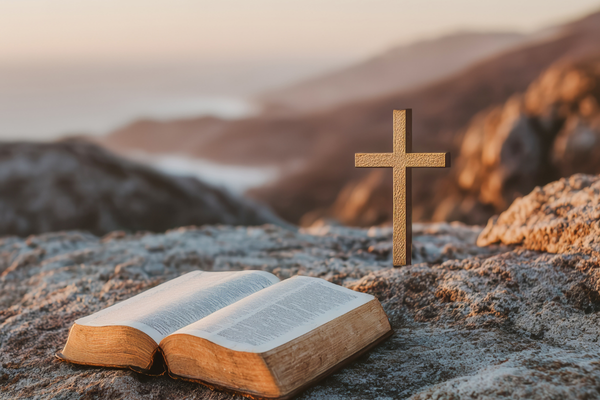Simon’s THOMIA sways Sri Lanka-by Rohan Pethiyagoda
Reviewing the new book THOMIA written by Richard Simon, in The Island, 16 March 2025
Source:Thuppahis
As schools go, St Thomas’s College Mt Lavinia has, since its inception in 1851, had a disproportionate influence on the affairs of Sri Lanka. In ways both good and bad, it created the modern incarnation of this country. After all, four of our first five prime ministers were Thomians (‘Thomian’, by the way, is a Latin diminutive of Thomas, like Tom in English).
The passage of almost 175 years more than justifies a book on the history of the school. Most such histories, however, tell the story of the school through the lives of visionary founders, eminent principals, and illustrious past pupils. That’s if the author is someone other than Richard Simon. His ‘Thomia’ is a magisterial account of the social and political evolution of Sri Lanka from the early British period to the turn of the 21st century. Into this is woven the story of the school, from its modest beginnings in Mutwal to the national institution it has become today.
Such a narrative in the hands of a competent historian could be guaranteed to produce a compelling read. In the hands of the master storyteller that Simon is, however, it results in a masterpiece. Regardless of which school you attended, if you’re at all curious to know how Sri Lanka came to be what it is, why we turned one way or the other at each of those fateful bifurcations of history, this is the book for you. Having read the first volume prior to publication, I now find that I simply cannot put down the second, save for my aching arms: the thing weighs almost five kg, something you need to bear in mind if planning to ferry copies to friends overseas.
Younger readers brought up on rose-tinted history textbooks that venerate the nation’s founding fathers might find Simon excessively unforgiving of their sins. After all, post-Independent Ceylon was born with a silver spoon in its mouth. And then, in just one decade, those venerated founding fathers laid waste to it all. The ‘hartal’ of 1953 sent a clear message to future governments that Ceylonese were determined to live beyond their means: that there is, after all, such a thing as a free lunch. Then came the anti-Tamil pogrom of 1958, followed by Bandaranaike’s assassination the following year. That first disastrous decade also saw, in 1956, Sinhala being entrenched by law as the sole official language, effectively marginalizing Tamil and undermining English, the lingua franca. Add to that the economic malaise that plagued this country since Independence, caused entirely by political bungling, and the scene for the consequent tragedy is set.
Worst of Times
The air of nostalgic despair hidden beneath the acerbic wit that enlivens the book’s pages perhaps reflects the fact that Simon himself attended St Thomas’s at the worst of times. He warmed the benches of the Lower Fourth during the winter of the nation’s discontent. In 1966, Dudley Senanayake had decreed that we be the only country in the world to shun the seven-day week and adopt the lunar calendar instead. Well, how did that go? One consequence was, as Simon points out, Sri Lanka exported less in 1968 than in 1958. To hasten the sinking of the ship, also in 1968, Senanayake abolished English as a language of instruction in schools across the country.
Then came Sirimavo, ushering in an era of destitution, with everything from rice to cloth being rationed, businesses nationalized, homes confiscated, personal assets capriciously seized, and ceilings placed on incomes and dividends. The ‘standardization’ of GCE Advanced Level marks in 1971, whereby to enter university Tamil students were required to score around 10 percent more than their Sinhalese counterparts, signalled the first shots of the civil war to come. The first JVP insurgency saw the derailment of a generation and the slaughter of thousands of youths. The victims included KDK Perera, a Thomian schoolboy who disappeared en route to his parents’ home in Diyatalawa when schools were closed following the imposition of emergency rule. The liquidation of Richard de Zoysa (to whom Simon dedicates ‘Thomia’), this time by the UNP, would come two decades later. So bad did things become by 1973 that the lawn of the school’s revered quadrangle had to be uprooted and replaced with manioc to feed the boys.
Renaissance
It was only in the fourth post-Independence decade that the renaissance finally began. Today, St Thomas’s is without a doubt the jewel in Sri Lanka’s educational crown. Its manicured lawns, curtained dormitories and sparkling toilets give no hint of privations past. The students too, have a spring in their step. They ooze confidence: no limp handshakes, no averting their gaze when they chance upon a stranger. Basking in a rare cricketing win against a school three times their size, this week saw them standing taller still.
To some, all this might smack of privilege. That, it is anything but. As Simon consistently emphasizes, though perhaps not in these words, the values the school seeks to inculcate in its pupils are thrift, modesty and egalitarianism. No-one cares who your father is, or how you travel to school. As important is the fact that despite being part of the Church of Ceylon establishment, the school is remarkably secular, with Tamils, Moors, Burghers, Malays and Sinhalese mixing effortlessly with one another. This ‘colour-blindness’ is something that distinguishes even adult Thomians. If SWRD had to fake being a Sinhala Buddhist supremacist bigot to win votes, he did that on his own time.
Labour of Love
In ‘Thomia’, Simon presents a masterly analysis of Sri Lanka through the colonial and postcolonial periods: colonialism versus nationalism, Christianity versus Buddhism, Sinhalese versus Tamil. The text is livened by his sometimes-sardonic wit, highlighting the political blunders that put us in our present predicament. His text is impressively well-researched, citing hundreds of references to substantiate its claims. To write a history of the school would have been easy: after all, there’s a wealth of documentation. But to have set it into the context of Sri Lanka as it evolved through almost two centuries, to write the biographies of luminaries long dead, is a monumental task. And it is a task that, in this labour of love, the author has executed to perfection.
Simon tells the story of STC and Sri Lanka without ever seeking to glorify the school’s alumni. After all, those first five Thomian prime ministers were abject failures (my words, not his). Born into privilege and nurtured in the arts of liberal-democratic governance since 1932 by the British, they seemed to have learned nothing. As soon as they got their hands on power, their single-minded quest was for the lowest common denominator.
Being Sri Lankan Thomia
Simon’s heft is commensurate with its vast scope. The book’s two volumes run to almost 1,000 pages. There are no illustrations to clutter the text, no photos of neatly-serried schoolboys in blue shorts, no portraits of famous alumni. Thomia is a monumental contribution to the historiography of Sri Lanka. Every Thomian worth his salt should buy a copy, and the rest should make arrangements to purloin one. This is not a book to read on the bus. This is a book that will help you, regardless of where you were schooled, to understand how Sri Lanka came to be what it is today.
Refreshingly, Simon’s command of English is excellent, as is his narrative style. I cannot think of a more readable Sri Lankan historical text, notwithstanding the high bar set by the likes of KM de Silva, Nira Wickramasinghe and Kumari Jayawardena. Sticklers for tradition might start from their seats at his addition of a possessive ‘s’ to the school’s name: St Thomas’s, rather than the standard St Thomas’. My only (minor) grievance is that the indexes omit many names mentioned in the text. Then again, to do justice to a text so rich in material, a comprehensive index might add another 50 pages to a book that is already a veritable thonker.
Thomia
is not a book written just for Thomians: it is a book for everyone who thinks seriously about what it means to be Sri Lankan. If you are numbered among that vanishingly rare community of Thomians who, educated largely in absentia, find themselves unable to read, you ought to buy one for the same reason people buy Patek Philippe watches: You never actually own your copy. You merely look after it for the next generation.























